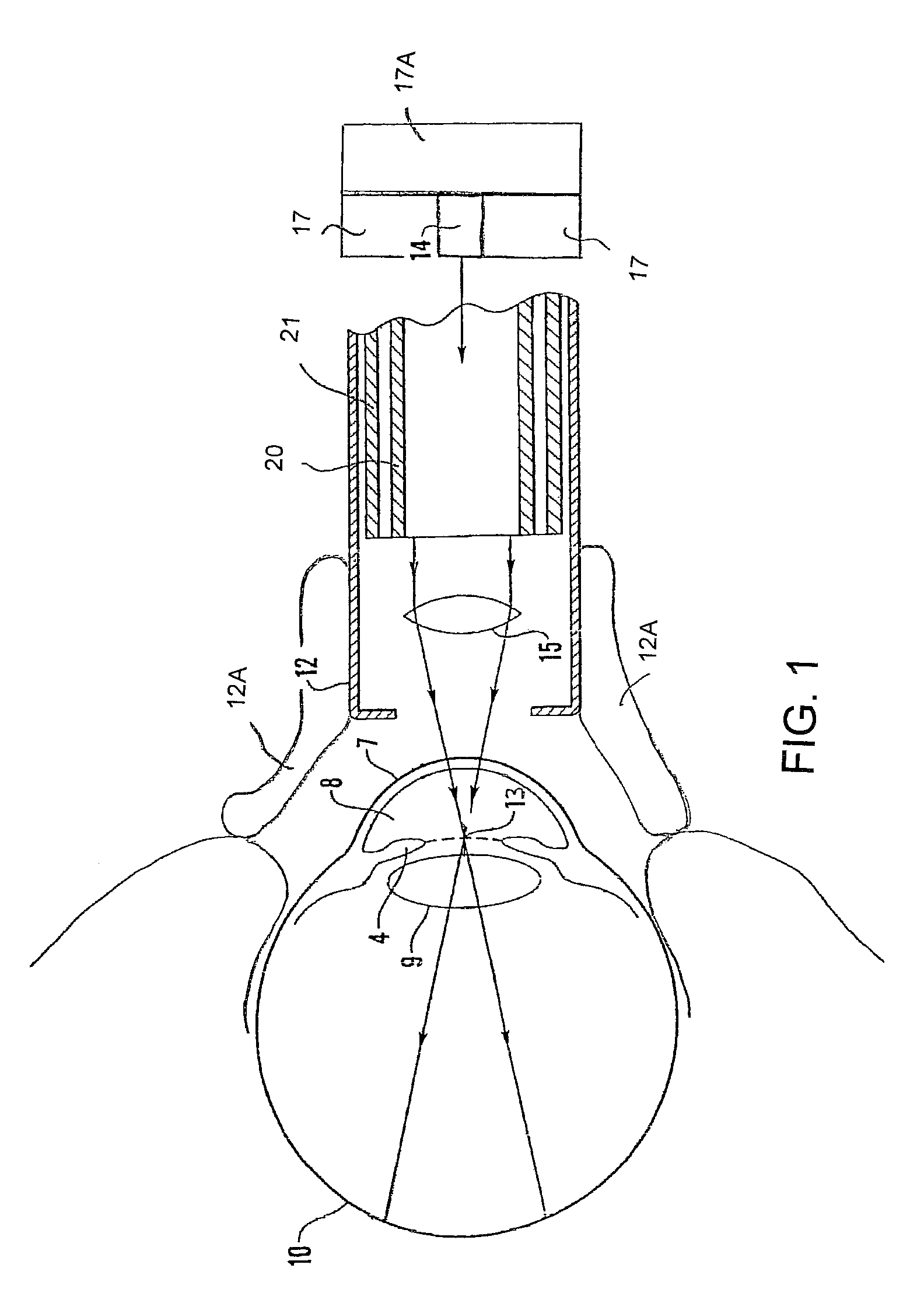Device for monitoring body functions
a technology for body functions and devices, applied in the field of non-invasive monitoring devices, can solve the problem of significant increase in the signal:noise ratio of recorded light, and achieve the effect of restricting the siz
- Summary
- Abstract
- Description
- Claims
- Application Information
AI Technical Summary
Benefits of technology
Problems solved by technology
Method used
Image
Examples
Embodiment Construction
[0030]In FIG. 1, a first optical system is shown that comprises a first light source 14 directing light to focussing means 15 mounted in a housing 12 for focussing light in the plane of the pupil 13 (so illumination is independent of pupil size) and directing the light onto the retina 10 of the eye. In FIG. 2, first receiving means 17 receives light returning from the eye through the pupil 13. FIG. 2 illustrates multiple reflection and scattering of the illumination light within the eye prior to the light emerging out of the pupil 13. Processing means 17A are provided for analysing the light that returns from the eye.
[0031]The first light source 14 is arranged to provide one or more pulses of illumination light, preferably a stream of pulses, and the receiving / processing means 17 is arranged to record the frequency and / or intensity of light returning from the eye intermittently at a selected timing relative to said pulses to reduce the proportion of light reflected from one or more ...
PUM
 Login to View More
Login to View More Abstract
Description
Claims
Application Information
 Login to View More
Login to View More - R&D
- Intellectual Property
- Life Sciences
- Materials
- Tech Scout
- Unparalleled Data Quality
- Higher Quality Content
- 60% Fewer Hallucinations
Browse by: Latest US Patents, China's latest patents, Technical Efficacy Thesaurus, Application Domain, Technology Topic, Popular Technical Reports.
© 2025 PatSnap. All rights reserved.Legal|Privacy policy|Modern Slavery Act Transparency Statement|Sitemap|About US| Contact US: help@patsnap.com



